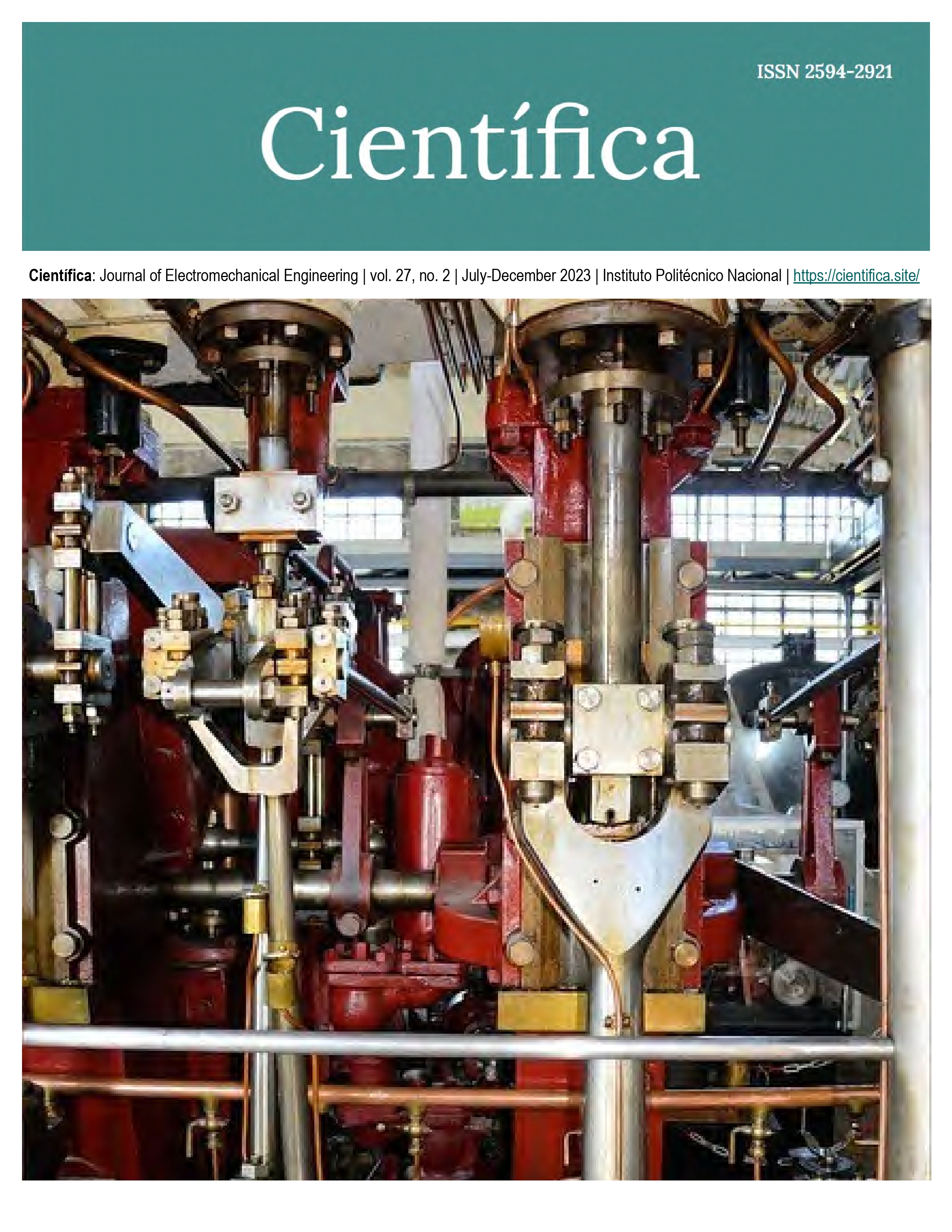Numerical Fatigue Evaluation of Tumorous Knee Prosthesis
DOI:
https://doi.org/10.46842/ipn.cien.v27n2a01Keywords:
Finite Element Analysis, fatigue, knee prosthesis, UHMWPEAbstract
In recent years, the mechanical performance of ultra-high molecular weight polyethylene (UHMWPE) has attracted a great deal of interest in joint replacement applications. The clinical significance of the fatigue and fracture properties of parts made of UHMWPE depends on the prosthetic device. Abrasive and adhesive wear mechanisms usually prevail in retrieved acetabular inserts, noting that fatigue-damaged surfaces often occur in tibial inserts. Therefore, wear resistance is of great importance in prosthetic components, as higher joint contact pressures make fatigue and fracture properties more relevant. It can thus be concluded that medical grade formulations of UHMWPE should represent a balance between design considerations, wear resistance, oxidation resistance, fatigue and fracture properties. Therefore, one of the main considerations for the design of any device with variable loads is the design by fatigue, avoiding cracks at micro and macro level, and as a consequence sudden failure of the system. This causes a total replacement of the part or, in the worst case, a catastrophe involving human lives. The objective of the present investigation is to provide a fatigue and fracture analysis, through a numerical evaluation to UHMWPE material bushings used in the knee prosthesis joint. A fatigue study was carried out on the bushing piece taking into consideration a squatting position of 130 degrees of flexion of the femur with respect to the tibia, showing results of the location where the damage starts in the bushing, as well as its lifetime in years. The results indicate a life cycle of 15.8 years before material failure.
References
S. M. Kurtz, UHMWPE Biomaterials Handbook, USA: Elsevier, 2016.
E. Dieter, Metalurgía mecánica, México: Aguilar, 2000.
I. ASTM, Standard Test Method for Tensile Properties of Plastics, USA: ASTM International, 2003.
A. Swanson, “The deep squat (part 1 -the good, the bad, & the not so ugly)”, url: https://www.aaronswansonpt.com/thedeep-squat-part-1-the-good-the-bad-the-not-so-ugly/
V. C. Mow, Basic Orthopedic Biomechanics, New York: Reven press, 1991.
D. David, “In Vivo Tibial Force Measurement After Total Knee Arthroplasty”, Bioengineering, pp. 37-55, 2007.
J. Hamrock, Diseño de elementos de máquinas, México: Mc Graw Hill, 2000.
J. C. Baena et al., “Wear Performance of UHMWPE and Reinforced UHMWPE Composites in Arthroplasty Applications”, Lubricants, vol. 3, no. 2, pp. 413-436, 2015.
K. O. Buehler et al., “The press-fit condylar total knee system: 8- to 10-year results with a posterior cruciate-retaining design”, Arthroplasty, vol. 15, no. 6, pp. 698-701, 2000.
Downloads
Published
Issue
Section
License
Copyright (c) 2023 Instituto Politecnico Nacional

This work is licensed under a Creative Commons Attribution-NonCommercial-ShareAlike 4.0 International License.

